Trip Logs
The Northwest Passage: From Greenland to the Bering Sea Trip Log: August 23–September 15, 2022

August 25, 2022 | Kangerlussuaq
Having been greeted with a welcome dinner at the Four Seasons Hotel Montreal the previous evening, we awoke early to accommodate some unanticipated changes due to delays with our Canadian paperwork. Our charter flight to Greenland had been rerouted through Plattsburgh, New York, necessitating a transfer by coach. The drive was a smooth one though, and we passed through the border check with surprising speed. Soon we were all airborne, complimentary mimosas in hand.
Landing at Kangerlussuaq, coaches were waiting to take us down to the pier. Our naturalist guide, Mike Beedell, provided a running commentary along the way, offering insights into tundra plants, glacial erratics and the region’s U.S. military connection (underscored when a Hercules transport plane landed on the same runway shortly after arrival). Before long, we were boarding the tenders for a warm reception aboard ‘L’Austral.’

August 26, 2022 | Sisimiut
We woke early with excitement for our exploration of Sisimiut, a thriving fishing port and Greenland’s second-largest city. As we strolled toward down the gangway and into town, we noticed a host of new and refurbished buildings amid the town’s traditional frame houses.
We toured the Sisimiut Museum, taking in its open-air collection of historic buildings, including a church dating to 1775, a replica sod-and-stone house and an early Greenlandic dwelling. We also explored the work of local photographers, a smith’s shop complete with anvil and bellows, and a simple hut’s cast iron stove and wooden sleeping platforms.
Back aboard, Expedition Leader Susan Adie conducted a wide-ranging evening briefing. At the Captain’s dinner, we discussed tomorrow’s exploration of Illulisat with keen anticipation.

August 27, 2022 | Illulisat
Weaving their way through a snug harbor bristling with bobbing fishing boats, our Zodiacs arrived at a pier in the port of Illulisat. Here, coaches waited to reveal the city’s sights.
Founded as the modest trading post of Jakobshavn in 1741, Illulisat grew steadily over the years thanks to the fishing industry, particularly the export of halibut and prawns. Today, Illulisat ranks as Greenland’s third-largest city with a population of around 5,000. The Illulisat Icefjord’s listing on the UNESCO World Heritage register in 2004 spurred a tourism boom that continues to thrive.
Our coaches meandered through town and further up the hills to the new visitor center, a dramatically arched building designed by Danish architect Dorte Mandrup-Poulsen. Here, a mile-long boardwalk skirted red and orange tundra past still pools of iridescent green to bring the massive glacial peaks of the Icefjord front and center. We stood in awe of this vast icy moonscape, imagining the impression it must’ve made on the men of Sir John Franklin’s 1845 expedition.
A small fleet of boats met us at the marina to shuttle us out to the glacial peaks of the Icefjord. We watched as the line of bergs grew from a distant, corrugated line to a looming range of mountainous forms, some of them thousands of feet high and miles in extent, spanning every shade from green to gold to blue.
Our pilots guided us to the inner reaches of the bay where the confluence of melting fresh water from the bergs and the bay’s salt water formed an ideal feeding ground for whales. It wasn’t long before these giants of the ocean surfaced. We saw at least seven humpback whales, five adults and two juveniles, gracefully arcing out of the water and back in. Both times, one of the adults presented its fluke, each as individual as a fingerprint. With the engines muted, the only sounds were the gentle swooshing of the whale-broken water, the inhalations of awe and the clicking of camera shutters.
When the last boat pulled up in early evening and we climbed the stairs from the marina into the Grand Salon, the sense of wonder still lingered. No mystical fairyland, no CGI-enhanced Hollywood landscape could compare with what we had seen today in a far corner of our own familiar planet.

August 28, 2022 | Uumannaq
This morning, ‘L’Austral’ pulled into the mountain-surrounded harbor of Uumannaq as clear blue skies framed the twin-peaked stone mountain from which the town gets its name.
Established in 1763, the small hunting and fishing settlement of Uumannaq slowly grew to its present population of about 1,500 people. Over the years, Uumannaq’s main industry shifted from whaling operations to a niche market in the export of fine white marble.
We broke into two groups and debarked, one headed for an invigorating hike up to a lake at the foot of the mountain, and the other off for a quieter stroll through town. As we stepped off the Zodiacs, the bells of the local church’s stone tower pealed gently, inviting some of us to attend the morning service.
The hikers assembled and tromped up the rocky hills, led by our naturalist guides Mike Beedell and David Reid, while expedition archaeologist Margaret Bertulli guided a tour of the Uumannaq Museum, revealing traditional Greenlandic tools, implements, artwork and clothing, including a bird-skin parka discovered alongside the “Greenland Mummies” of Qilakitsoq in 1972.
After perusing the museum, the group explored the town’s steep streets and quaint houses nestled among rounded outcrops of solid rock. Climbing to the highest spot in town, we took in sweeping views of the harbor, the ship, and several massive icebergs glistening in the sun. Before it set, Uumannaq, “the heart-shaped one,” had surely found its way into ours.

August 29, 2022 | Melville Bay
‘L’Austral’ cruised north from Uumannaq, revealing the iceberg graveyard of Melville Bay. Here, currents and winds conspire to trap the largest outflow of freshwater ice in Greenland until it melts away.
The photographers among us took full advantage of the afternoon Zodiac cruise amid the melting bergs of the bay, capturing glistening shades of indigo and silver reflected in the water’s iridescent mirror. The bay of fading giants inspired a sense of quiet reverence as we silently traded places on the gunwales for the perfect vantage.
We returned to the ship for recaps. This evening, Jason Hicks’s account of disappearing sea ice was followed by an unexpected treat. As Michelle Valberg shared stirring photographs, our musician-in-residence, Mike Stevens, played an extraordinary accompaniment on his harmonica. A few moments later, he was joined by naturalist David Reid, reciting a poem he’d written only the night before on the deeper meaning of the vanishing ice. The effect was utterly mesmerizing.

August 30, 2022 | Coburg Island
‘L’Austral’ sailed west as we slept, reaching Canadian waters by morning. Thanks to the ship’s stabilizers, it was a smooth crossing despite the choppy seas.
After breakfast, Michelle kicked off the morning’s enrichment lectures by teaching us how to manually operate the ISO, shutter and aperture settings of our cameras, enabling us to “get off the green button.” Novelist and essayist Carin Clevidence gave a short introduction to travel writing and journaling, the latter a topic that was dear to many. Russell Potter followed with a lecture about the 1845 Franklin expedition, detailing this epic story from its seemingly auspicious beginning to its uncanny end — with plenty of mystery remaining after 177 years.
All was quiet till mid-afternoon when the first bits of sea ice drifted into view. Soon, the wind picked up to speeds exceeding 40 knots. Our ship slowly wove its way around the ice under the careful guidance of Captain Stanislaus Devorsine and veteran ice pilot Raymond Jourdain as we spotted northern fulmars, kittiwakes and thick-billed murres from the deck.
The evening brought another lively recap, with refreshers on sea ice terminology and a preview of the next day’s planned activities in Pond Inlet. Insights from our Inuit cultural expert, Leslie Qammaniq, piqued our interest in tomorrow’s shore excursion.
August 31, 2022 | Pond Inlet
We awoke primed for our visit to Pond Inlet, Nunavut, an excursion that would mark our journey’s first encounter with an Inuit community.
Mike Stevens kicked us off with a moving presentation recalling how his spontaneous visit to a small Innu community in Labrador blossomed into ArtsCan Circle, an inspiring program that has distributed more than 10,000 harmonicas to indigenous children across northern Canada and Alaska.
During lunch, Canadian customs boarded the ship to clear us for our landing. Then, it was time to board the Zodiacs and head for Pond Inlet’s floating pier, a new structure set inside the harbor’s recently built stone walls.
Once ashore, our guides escorted us to the visitor center, where we were greeted by the staff and some young people from the local Parks Canada office. Then, it was on to the community center for a demonstration of Inuit games, including variations on the “high kick,” which the performers managed wearing kamiks (skin boots).
Then came the drum dancing — rich, rhythmic and resonant. The drummers took turns leading as everyone danced in unison. The effect was hypnotic. Next, the women paired off for throat singing, showcasing a variety of styles. After the final encore, the performers were introduced and took their bows amid rollicking applause. We all felt warmly welcomed as guests among the people who have made this land their home for thousands of years.

September 1, 2022 | Dundas Harbor & Croker Bay
This morning found ‘L’Austral’ anchored near Dundas Harbor, perfectly positioned for the day’s two excursions, one to a village of Thule-era dwellings and the other to an abandoned Royal Canadian Mounted Police outpost.
Margaret led the exploration of the Thule structures, as well as a deep dive into the remarkable culture that built them. We learned that the Thule people thrived here from approximately 1200 to 1600, due in large part to the arrival of bowhead whales offshore. The settlement’s dwellings featured round sod and stone foundations with skin roofs supported by whale bones. These bones now lay scattered about, marking silent testimony to the distant ancestors of today’s Inuit people.
Meanwhile, the second group explored the abandoned Royal Canadian Mounted Police outpost, a historic site that witnessed a series of haunting tragedies. Three constables were stationed here in the 1920s, each ill prepared for life in the Arctic. Two of the men ostracized the third, compelling him to take his own life. One of the two remaining men was killed in what was described as a “walrus hunting accident,” leaving the third man to bury both of his comrades. We visited their gravesites overlooking the bay, the haunting stories of the interred lingering in our minds.
This post was also home to a group of Inuit relocated there by the Canadian government from Cape Dorset. Only a few weathered buildings testify to their time here.
In the afternoon, we enjoyed a Zodiac cruise around the Croker Glacier, our first encounter with a rugged glacial face. We watched as a polar bear climbed partway up a cliff on the southern side of Croker Bay and settled in for a nap.

September 2, 2022 | Beechey Island & Radstock Bay
Today, we explored a site of great significance in the history of Sir John Franklin’s lost Arctic expedition of 1845, Beechey Island.
Our landing went remarkably well despite some choppy conditions early on. Once ashore, we paused at the graves of three of Franklin’s men and that of a fourth who died searching for them. Looking out over Erebus and Terror bays, we listened as Russell read passages from a letter written by the mother of John Hartnell, one of the men interred here. She hadn’t known it at the time, but when she wrote that letter in December of 1847, her son had already been dead for two years.
In the afternoon, we visited neighboring Radstock Bay, an enclave nestled under the imposing cliffs of Caswell Tower. Our Zodiacs landed on a beach strewn with squarish fragments of rock that had fallen from above. We hiked inland to the ruins of a Thule village comprising four or five well-preserved dwellings, each with a huge scatter of whale bones. There were also traces of later visitors, including fragments of a boat, a broken stoneware jug, barrel hoops, pieces of wood and copper sheeting — perhaps artifacts from Sherard Osborn’s 1851 search party.
The day saw a mix of sun, clouds and chilly winds — a reminder that Arctic winter was lurking just around the corner.

September 3, 2022 | Fort Ross & Bellot Strait
Morning found ‘L’Austral’ at anchor outside the entrance of Bellot Strait, site of the abandoned Hudson’s Bay post known as Fort Ross. Built in 1937, this former residence served as a hub of the Arctic fox fur trade until the onset of World War II.
Once ashore, we explored the old trader’s house. Formerly a remarkably fine home with built-in mahogany shelves and cabinets, the dilapidated structure is now a shadow of its former self — its comfy chairs now masses of springs and torn fabric, its wallpaper peeling, and the floor missing in places. We also visited the site’s old warehouse, a structure that has been converted to a weathertight emergency shelter for hunters and boaters in need. Next, we paused at a memorial to Francis McClintock, the famed Franklin searcher who stopped here during his 1858 trek to discover the remains of the expedition.
After visiting the site’s buildings, many guests hiked up a rocky ridge for sweeping views of the Bellot Strait’s entrance. Discovered in 1852 by William Kennedy and Joseph René Bellot, this strait spans a dramatic shortcut through what was once thought to be the continuous Boothia Peninsula.
Capping our extraordinary day, we had a rare opportunity to debark for a short Zodiac ride to Zenith Point, where a cairn marks the northernmost point of the contiguous North American continent. After passing through, we entered Franklin Strait bound for Coningham Bay, a well-known wildlife site on the further shore.

September 4, 2022 | Coningham Bay
‘L’Austral’ took anchorage a good distance from the entrance to Coningham Bay, the focus of the day’s excursion. Renowned for its wildlife, the bay harbors an abundant population of belugas and teems with the polar bears that eagerly feast on them. The bay’s entrance is shallow, so we had to time our Zodiac excursion carefully with the tide.
We boarded the Zodiacs for the brisk ride in, slowing as we entered the bay. A keen-eyed guest soon spotted a polar bear on a hillside at the far end of the bay. We approached by degrees, watching as the bear ambled along the hillside, edging closer to the water.
We headed back along the shore to a site where our scouting party had located a large accumulation of beluga bones. A little farther along, we found a caribou skull with one antler. Our naturalist, Pierre, deduced that these were likely the traces of an Inuit hunting ground rather than the remains of polar bear meals. A nearby pile of lumber seemed to confirm his hypotheses, suggesting that someone was planning to build a hunting shed or a cabin here.
Back aboard, we reflected on another day of intrepid exploration in this far-flung corner of the world while anticipating tomorrow’s fresh call to adventure in the Inuit community of Gjoa Haven.

September 5, 2022 | Gjoa Haven
After carefully navigating the treacherous straits of Franklin, James Ross and John Rae, ‘L’Austral’ anchored off the coast of King William Island, home to the Inuit community of Gjoa Haven.
Named by Roald Amundsen during his sojourn here in 1904-1905, King William Island was later the site of trading posts operated by the Hudson’s Bay and CanAlaska companies. Today, the island is home to a growing community of nearly 2,000 people.
We were met on the beach by town tour guides who took us to tour the Kativik Health Center’s updated facilities, as well as the Nattilik Heritage Center’s collections of local crafts, clothing and historic artifacts. A relatively new exhibit explored the history of the Franklin expedition through replicas of various relics. We also visited the hamlet office, where we were greeted with the customary tea and Bannock (pan-fried bread). At the end of the tour, some of us walked around town while others trekked out to a nearby point to see a monument dedicated to Amundsen.
We returned to ‘L’Austral’ with a deeper appreciation of the local indigenous heritage, as well as the historic expeditions that had proceeded ours.

September 6, 2022 | Queen Maud Gulf
This morning found ‘L’Austral’ fogbound in Queen Maud Gulf. Named by Roald Amundsen after Queen Maud of Norway, Queen Maud Gulf would mark the furthest reach of Franklin’s historic expedition, with ‘HMS Erebus’ lying below its eastern edge.
Although our own voyage to the gulf had been far smoother than Franklin’s, the fog would impede the day’s planned landing at Jenny Lind Island. In addition to posing a navigational hazard, the fog would also prevent the bear guards from securing the shore, so the landing was wisely scrubbed.
Ever adaptable, the Expedition Team kept us entertained with an engaging series of shipboard lectures and activities. Mike Stevens’s group harmonica lesson proved to be the surprise hit of the day. Though painful at first, our melodies soon smoothed out with a bit of instruction and practice.
While wind and fog may have changed our plans, we took what the sea gave us and made the best of it — a new tune in our heads, and new harmonicas in our pockets.

September 7, 2022 | Edinburgh Island
Although the fog cleared by morning, 40-knot winds soon kicked up the seas, scrubbing our anticipated landing at Johansen Bay. Not to be thwarted a second day in a row, our resourceful Captain diverted ‘L’Austral’ westward to Edinburgh Island, where deeper waters and a well-protected bay would afford safe anchorage.
After a relatively smooth Zodiac landing on Edinburgh Island, we found ourselves in a wide, sweeping draw nestled between dark brown basalt cliffs — a few scattered caribou antlers dotting the muskeg that surrounded us. Once our bear guards and scouts were in place, we hiked along the cliff’s shadow toward a brilliant biome of willows, mosses and blueberries. Ordinarily clinging to the ground, here the willows grew to three or four feet in height, all bright yellow in their autumnal blaze. A hawk circled as we climbed to the cliff-top for views stretching out toward Victoria.
Back on board, we took in Fran’s lecture on the “Polar Opposites” of the Arctic and Antarctic, and Pierre’s exploration of beluga whales. Later, the dinner discussion centered around tomorrow’s excursion to Banks Island, an adventure we were all eagerly anticipating.

September 8, 2022 | Banks Island & De Salis Bay
This morning we set our sights on Banks Island, a site where Franklin searcher Robert McClure became icebound in 1850. After two subsequent rescue efforts, he and most of his crew were eventually saved, but not after the bay’s icy grip had claimed the hulls of both ‘HMS Investigator’ and ‘HMS Resolute.’ Today, Banks Island is home to caribou, polar bears and muskox, as well as the 103 intrepid humans that inhabit the tiny hamlet of Sachs Harbor.
The Zodiac drivers deftly negotiated a series of sandbars, landing us safely on Banks Island near the mouth of a river. Here, a muddy shoreline scattered with limestone gave way to drier tundra woven with patches of clay. We saw signs of the island’s wildlife as we hiked along the riverbank to a patch of high ground that supported a tiny tundral prairie of grass. From there, those of us with scopes or binoculars spotted several species of birds. In the other direction, panoramic views of the ship and harbor framed a perfect photo opportunity preceding our return to ‘L’Austral.’

September 9, 2022 | Smoking Hills & Franklin Bay
‘L’Austral’ headed southwest toward the Smoking Hills of Franklin Bay. Discovered by Sir John Franklin in 1826, the hills are named for the sulphureous smoke emitted by the spontaneous ignition of tiny iron pyrite particles.
We boarded the Zodiacs to cruise this singular shore in two directions. Looming black mounds of tarry shale were broken by smoldering incursions of red-, yellow- and orange-fringed rocks, while the beaches were littered with burnt conglomerates resembling giant lumps of coal.
Back aboard ‘L’Austral,’ we took in an Inuit storytelling and beading class with Leslie, followed by Margaret’s afternoon lecture about Fort Conger, a historical site on Ellesmere Island first visited by the Nares Expedition in 1875.
This evening, our Marco Polo members enjoyed a special reception complete with Champagne, caviar and canapés.

September 10, 2022 | Beaufort Sea
We cruised the Beaufort Sea, hugging the ice’s edge at a safe distance in hopes of spotting polar bears. The few we had seen so far were distant foragers, appearing briefly as tiny white blobs and quickly disappearing amid the brown hills. Our luck was about to change.
We spotted numerous polar bears amid the Beaufort ice, several close enough to see with the naked eye. The healthy, well-fed specimens amply filled the frames of our binoculars, scopes and long lenses. While alert to our presence, the bears didn’t seem alarmed by us. We watched as they stood upright on massive hind legs, scanned the horizon with long stares and sniffed the air with flexible noses, their mouths opening periodically for great gulps of air. Our naturalist guide explained that this gulping served to enhance the bears’ sense of smell.
Midway through the day, we were treated to an outdoor barbecue of salmon, steak and chicken wings paired with corn-on-the-cob. We dined al fresco or indoors as the ship periodically backtracked across the ice’s edge to afford both port and starboard views of the floes.
By day’s end, we had sighted at least 18 polar bears. For those of us accustomed to seeing polar bears in a zoo, the experience of encountering so many specimens amid the vast wild ice floes was a revelation. Finally, ‘L’Austral’ headed south, marking the end of a particularly spectacular chapter of our voyage.
The polar bear sightings had preempted the day’s enrichment presentations. Now, with evening approaching, we gathered for Michelle’s lesson on creating an emotional impact with photography. When she projected her striking photos of the day’s polar bear encounters, the full power of her presentation truly hit home. Afterward, we made our way back to our cabins, some of us struggling to quell the adrenaline that still coursed from the day’s adventures.

September 11, 2022 | Fort Herschel
Morning found ‘L’Austral’ cruising further west toward our next destination, the old whaling station at Herschel Island.
Inhabited by the Thule for over a thousand years, Herschel Island was first visited by Sir John Franklin in 1825. In 1889, the island became the site of a commercial whaling station that supported a thriving winter colony of some 500 people and 15 ships. In 1907, the market for baleen plummeted, and whaling activity rapidly declined. The Hudson's Bay Company maintained a fur trading post at the site for another 30 years, but most of the residents had left by then. In 1987, the entire island was made into a territorial park in accordance with the Inuvialuit Final Agreement.
This afternoon, four park rangers of Inuvialuit descent boarded ‘L'Austral’ to join us for lunch. Afterward, we adjourned to the ship’s theater where the rangers gave a presentation on the park's history and cultural significance. Then, we boarded the Zodiacs and followed the rangers into a small harbor near the site of the old settlement. A few of the settlement’s buildings were still in use, including the former whaling station and the old baleen storehouse, now home to the park's museum.
We photographed some restricted sites from a respectful distance, including a log home, the old mission house and a hillside where the whalers’ graves still stood. A lone fox loitered at the edge of the settlement, making cameos in several of our photos.
We learned that the site restrictions were in place for good reason. The World Monuments Fund had listed Herschel as one of its 100 most endangered places. Our group, only the third to visit this year, was part of a pilot program aimed at fostering responsible tourism.
At day's end, we returned to the ship in our Zodiacs, waving a fond farewell to the rangers who stood on the shore to see us off from this remarkable island.

September 12, 2022 | Beaufort Sea
Following our visit to Herschel Island, ‘L’Austral’ embarked on a two-day crossing of the Beaufort Sea into U.S. waters. The seas remained a lively 5 to 6 on the Beaufort scale with limited visibility.
We began the day with Fran Ulmer’s presentation, “The Top Ten Things to Know About Alaska.” As Alaska’s former lieutenant governor, Fran brought a unique perspective to her talk, leaving us all eager to learn more. Meanwhile on Deck 6, Leslie cultivated an ever-growing following at her latest beadwork lesson. Pierre’s afternoon lecture covered whales, seals, and walrus; while Jason’s climate change discussion kept things lively.
In the late afternoon, guests were treated to a wide-ranging question-and-answer session with A&K founder, Geoffrey Kent, marking a perfect start to the A&K 60th anniversary dinner. The festivities opened with Champagne toasts from Mr. Kent and Captain Devorsine, followed by a spectacular five-course meal.

September 13, 2022 | Beaufort Sea
Our voyage through the Beaufort Sea continued amid improved visibility and open water in every direction.
We took in the second installment of Jason’s climate change talk, followed by Leslie’s final beading class. In the afternoon, Margaret shared an engaging account of her archaeological exploits in the region. She had worked closely with indigenous communities on a number of her projects, including studies of human remains from the Franklin expedition. As the evening drew near, Michelle held the last of her photo talks, and Mike Stevens the last of his harmonica lessons.
The evening was festive, but bittersweet. There is always a tinge of sadness as a grand adventure draws to a close. During the Captain’s farewell dinner, the ship’s staff were thanked with a warm round of applause. The spirited late-evening talent show revealed the hidden talents of the staff and crew, featuring guitar and vocals by Susan and Russell, a poignant Spanish ballad by Augustine, and some boogie-woogie piano from Vladimir, just to name a few.

September 14, 2022 | Little Diomede & Fairway Rock
Fog settled over the water as we cruised overnight toward the Bering Strait, obscuring the lights of a village on one of the Diomede Islands we’d hoped to see.
We had much better luck in the light of day at Fairway Rock, where a gap through the mist revealed a colony of steller sea lions perched on a craggy pyramid of an island. The shutterbugs among us lined the port side of the ship to make the most of the clear vantage — the fog abruptly closing in when the captain turned the vessel to starboard.
Later, ‘L’Austral’ pulled alongside a tanker to bunker fuel for several hours. Sufficiently fueled, we sped quietly south toward our final destination of Nome.
September 15, 2022 | Nome
Slipping within the break-wall of Nome’s harbor before dawn, we were met by a swell heralding the advance of a cyclonic storm surge from the south. Given the swell’s intensity, the Captain delayed the loading of passengers and luggage into the tenders. The ship’s crew improvised and served lunch on board. Afterward, Jason gave a fresh lecture on the future movements of tectonic plates.
The water calmed enough for debarkation by early afternoon. Once ashore, we boarded buses bound for the hospitality center, where A&K’s local team had assembled a spread of salmon quiche, pasta and homemade brownies.
Finally, it had come time for us to board the busses for the airport, where our charter flight to Anchorage awaited. We bid each other farewell — our freshly forged memories swirling with thoughts of the next grand adventure to come.

























































































































































































































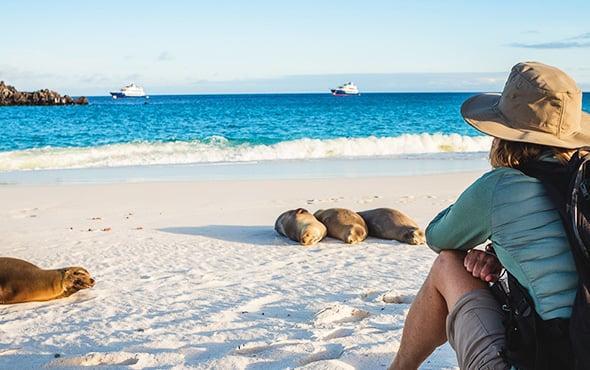
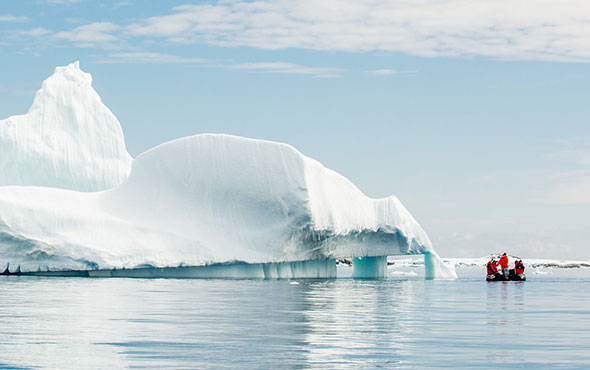
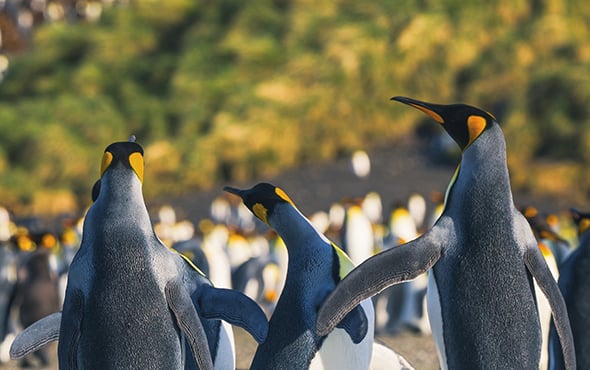

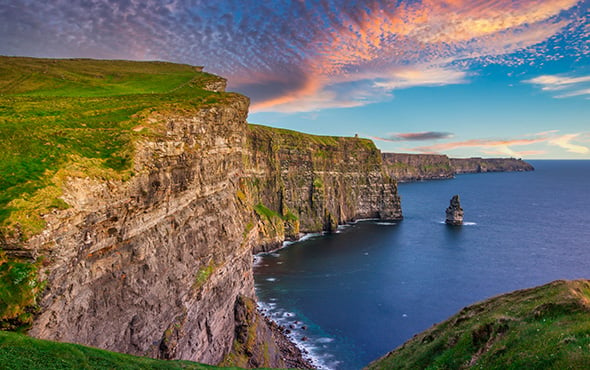
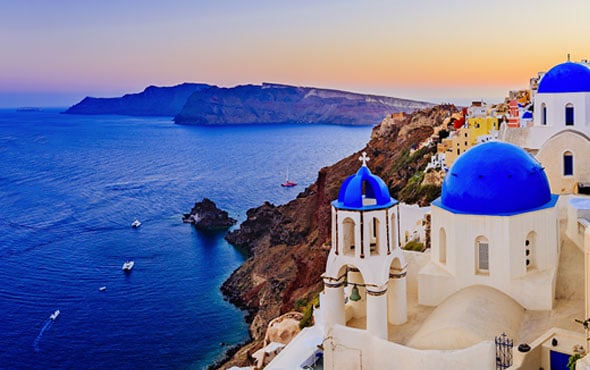


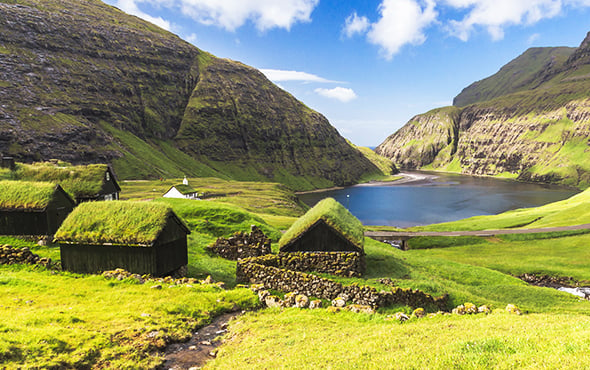
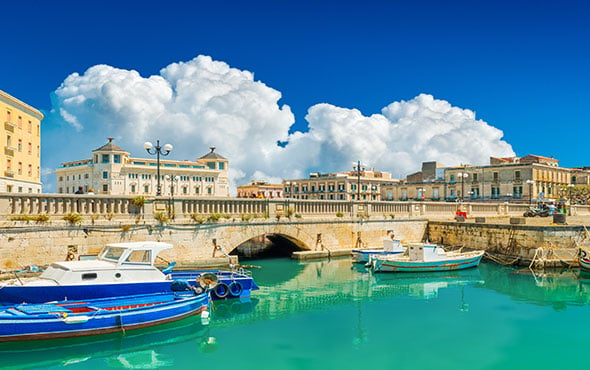


 The Americas
The Americas
 Europe, Middle East and Africa
Europe, Middle East and Africa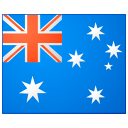 Australia, NZ and Asia
Australia, NZ and Asia